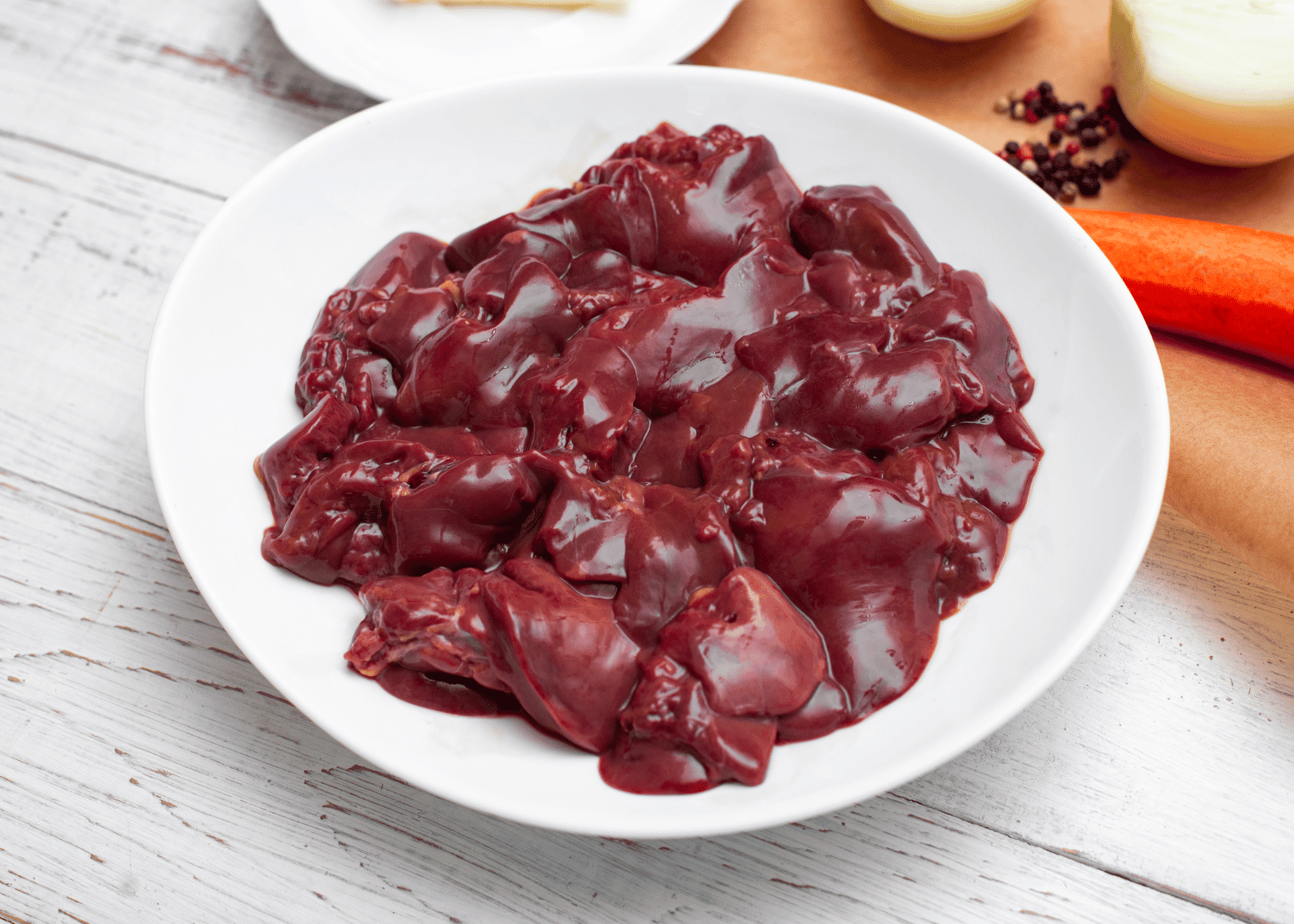Have you ever tried using chicken liver as bait, only to see it slide off your hook at the slightest tug? I feel your frustration – just like you, I’ve lost count of how many times my bait has ended up serving as free fish food. Let’s find out how to keep chicken liver on the hook!
After trying everything and conducting an exhaustive research, I discovered a variety of methods that can effectively keep the chicken liver on the hook! Intrigued? Dive into this enlightening blog post and let’s take the slip out of your next fishing trip.
Key Takeaways
- Chicken liver can be a challenging bait to keep on the hook due to its fragile nature and tendency to come off easily.
- Techniques like salt and borax curing, using bait bags or netting, and securing with sewing thread or elastic can help keep chicken liver securely on the hook.
- It is important to handle chicken liver properly by keeping it cold, using a sharp knife for clean cuts, and minimizing handling to prevent damage.
- If you’re looking for alternative bait options, worms and artificial baits can be effective alternatives to chicken liver.
Challenges of Using Chicken Liver as Bait
Using chicken liver as catfish bait can be challenging due to its difficulty in staying on the catfish hook and its fragility, making it prone to coming off easily.
Difficulty in keeping chicken liver on the hook
Securing chicken liver on a hook can pose quite a challenge due to its fragile nature. But how to keep chicken liver on the hook? One small tug or nibble from a fish, and your bait might simply fall off. The liver’s soft consistency causes it to squish or tear when you try to pierce the hook through it, as opposed to tougher baits like worms or artificial lures that securely grip the hook.
Even with careful handling using a sharp knife and keeping them cold until ready for use, chicken livers still tend to slide off hooks easily. However, many successful anglers have found ways around this dilemma by using tricks such as elastic bait threads and Surgilast tubing which readily absorb blood while providing an enticing scent for hungry catfishes.
Techniques like salt and borax curing can also help toughen up the liver making it less likely to fall apart during casting or reeling in.
Fragility and tendency to come off easily
Chicken liver is a popular and effective bait for many fishermen, particularly when targeting larger channel catfish,. However, one of the biggest challenges when using chicken liver as bait channel catfish is its fragility and tendency to come off the hook easily.
This can be frustrating and result in missed opportunities for bites. To combat this issue, anglers have developed various techniques to keep chicken liver securely on the hook, ensuring it stays intact during casting and while in the water.
These methods range from using salt and borax curing to toughen the liver, to utilizing bait bags circle hooks or netting that help hold it in place. Additionally, some anglers prefer securing the liver with sewing thread or specialized elastic thread designed for baits.
Techniques to Keep Chicken Liver on the Hook

To keep chicken liver on the hook, there are several techniques you can try. One method is to use a salt and borax cure, which helps toughen the liver and make it more durable. Another option is to use bait bags or netting to secure the liver hooks in place.
You can also try using sewing thread or bait elastic to tightly hold the raw shrimp liver onto the hook. By experimenting with these techniques, you’ll increase your chances of keeping fresh chicken liver well on the hook for successful fishing trips.
Salt and borax curing
To toughen chicken livers and keep them on the hook, one effective technique is salt and borax curing. By coating the bottom using chicken livers with a mixture of salt and borax, they become firmer and more resilient, making it harder for them to come off while fishing.
This curing process helps preserve the liver’s texture and prevents it from easily falling apart when casting or reeling in. Soaking the chicken livers in a solution of salt and borax for several hours or overnight allows the curing agents to penetrate the meat, providing better durability during fishing expeditions.
Using bait bags or netting
Bait bags or netting can be an effective solution for keeping chicken liver on the hook while fishing. These popular bait bags or netting are specifically designed to secure the liver in place, preventing it from easily falling off. And, this is how to keep chicken liver on the hook!
Simply place the chicken liver inside the bait bag or wrap it with netting, making sure it is snugly held together. This method helps to maintain the integrity of the liver and ensures that it stays on your hook longer, increasing your chances of attracting fish.
Securing liver with sewing thread or bait elastic
To keep chicken liver securely on the hook, one effective method is to use sewing thread or bait elastic. By carefully threading the liver onto the hook and then wrapping it around circle hook more tightly with thread or elastic, you can ensure that it stays in place during casting and while waiting for a bite.
This method helps prevent the liver from easily coming off when fish are nibbling at it. It’s important to use a sharp knife to cut small pieces of liver and handle them as little as possible to avoid squishing or damaging them.
Taking these steps will increase your chances of successfully keeping chicken liver on the hook and attracting fish to great bait to your baited line.
Tips for Handling Chicken Liver
To handle chicken liver effectively, it is important to keep it cold to maintain its integrity and prevent it from becoming mushy. Use a sharp knife for clean cuts and minimal damage.
Handle the liver gently to avoid smashing or tearing, ensuring that it stays intact for baiting purposes.
Keep liver cold
To keep chicken liver fresh and ready for use as bait, it is important to keep it cold. Cold temperatures help to maintain the integrity of the liver, making it less likely to break apart or become too soft.
You can place the liver in a cooler with ice packs or wrap it tightly in plastic wrap and store it in the refrigerator until you’re ready to go fishing. By keeping the liver cold, you’ll have a better chance of either catching more catfish or successfully hooking and using it as bait.
Use a sharp knife
I always make sure to use a sharp knife when handling chicken livers. A dull knife can cause the liver to tear or mash, making it difficult to keep on the hook. With a sharp knife, I can easily slice through the liver and create clean, precise cuts that will stay securely on the hook during my fishing trip.
Keeping a sharp knife handy is an essential tip for successfully using chicken liver as bait. This will help you with how to keep chicken liver on the hook.
Minimize handling to prevent smashing or tearing
To keep chicken livers intact and on the hook, it is crucial to minimize handling. Excessive handling keeping chicken livers can lead to the liver being squished or torn, making it difficult to keep on the hook.
When preparing your liver bait now, try to handle the liver as little as possible. This means avoiding unnecessary squeezing or pressing of the liver in order to preserve its integrity. By gently placing the liver onto your hook without excessive force, you can prevent any smashing or tearing that might occur during handling.
Alternative Bait Options

– Worms, artificial baits, and cut bait like fish chunks are great alternatives to chicken liver when it comes to fishing. These options can be just as effective curing chicken liver in attracting fish and can save you the hassle of dealing with keeping liver on the hook.
Want to learn more about these alternative bait options? Keep reading!
Worms
I love using worms as bait when I go fishing. They are a classic choice and can be highly effective in attracting different types of fish. Worms have a natural scent that draws fish in, making them an enticing option for anglers.
Additionally, worms are easy to handle and stay securely on the hook without much effort. Whether you choose nightcrawlers or redworms, these wriggly creatures can be a reliable and versatile bait for catching various species of fish.
So next time you’re heading out on your fishing trip, don’t forget to bring along some live worms!
Artificial baits
Artificial baits are another option that can be used to catch fish, when fishing instead of using fresh livers. These baits are designed to mimic the appearance and movement of natural bait, such as worms or fish chunks.
One advantage of artificial baits is that they do not require any special handling or refrigeration like chicken liver does. Additionally, artificial baits come in a variety of shapes, sizes, and colors to attract different types of fish.
They can be easily attached to the hook and stay securely in place during casting and retrieval smaller catfish, eliminating the hassle of dealing with fragile bait like chicken liver. So if you’re looking for a convenient and effective alternative to using chicken liver catch catfish as bait, give artificial baits a try on your next fishing trip!
Cut bait (e.g., fish chunks)
I often use cut bait, such as fish chunks, when I go fishing. It is a reliable and effective option for attracting a variety of fish species. I find that using fresh pieces of fish as bait can entice larger predatory fish to bite.
To prepare the cut bait, I make sure to use sharp scissors or a knife to precisely slice the fish into manageable chunks. This allows me to easily attach the bait to my hook, ensuring it stays in place while casting and reeling little fish in.
The strong scent of the fresh cut bait acts like a magnet for hungry fish, increasing my chances of getting a successful catch.
FAQs
Here are some most commonly asked questions about how to keep chicken liver on the hook.
1. What is the best way to keep chicken liver on the hook?
One effective method is to wrap the chicken liver in a mesh or nylon bait bag, securing it tightly with thread or fishing line. This helps prevent the liver from easily falling off the hook when casting and reeling.
2. Are there any alternative methods for keeping chicken liver on the hook?
Another option is to use a small section of pantyhose or cheesecloth to encase the chicken liver before attaching it to the treble hook. This provides added stability and can help prevent it from coming loose during fishing.
3. Can I use bait bands to keep chicken liver on the hook?
Yes, bait bands can be used with smaller pieces of chicken liver. Simply stretch a bait band around both sides of the liver and then secure it onto your fishing hook. This method works well for delicate baits that may otherwise fall apart easily.
4. Is there anything else I should consider when using chicken liver as bait?
It’s important to handle the chicken and turkey livers with care, as they can be quite soft and fragile. Additionally, storing them properly in a cool environment until you’re ready to fish can help maintain their consistency and make them easier to keep on the hook during casting and retrieval.
Conclusion
In conclusion, keeping chicken liver on the hook can be a challenge for many anglers due to its fragility and tendency to come off easily. However, there are several techniques that can help ensure your bait stays securely attached.
By using salt and borax when curing salmon eggs or chicken liver, bait bags or netting, and sewing thread or bait elastic, you can increase the staying power of chicken liver as bait. Additionally, handling the liver properly by keeping it cold and using a sharp knife will minimize any damage.
But if all else fails, don’t forget there are other predators and alternative bait options such as worms or artificial baits that can still attract blue catfish and others effectively. Happy fishing!

